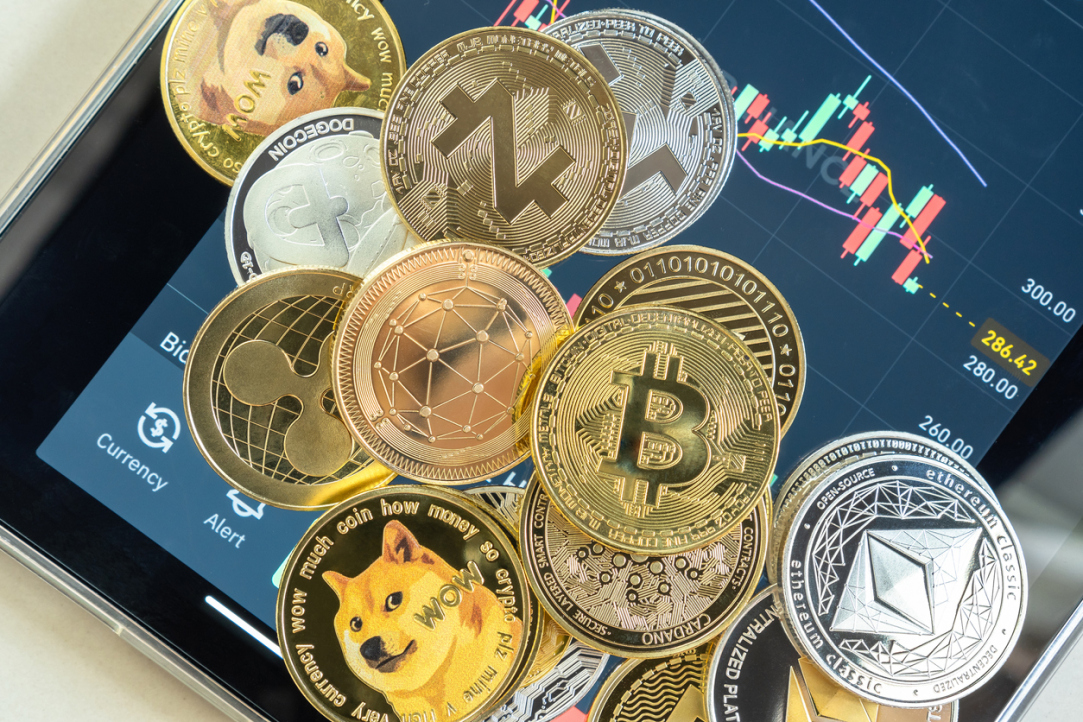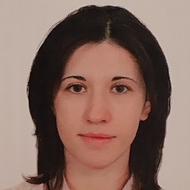- A
- A
- A
- ABC
- ABC
- ABC
- А
- А
- А
- А
- А
- HSE University
- Faculties
- Faculty of Economic Sciences
- School of Finance
- News
- The Cryptocurrency Market Works Like the Stock Market— Only Much Faster
-
The School
-
RESEARCH ACTIVITIES
- Laboratories
- Series “Advanced studies in emerging market’s finance” at Springer Nature o Networking with international academic associations
- Networking with international academic associations
- Research seminars
- International PhD workshop
- The International Seminar «ESG Transformation»
-
RESEARCH WORKING GROUPS
- Research Working Group "Innovations in the banking sector, its financial stability and prudential regulation"
- BUSINESS EDUCATION
- Networking with business associations
- Networking with professional associations
- Center for Research on Non-Financial Reporting
-
DATABASES
119049 Moscow, Russia
11 Pokrovskiy boulevard, room S629
Phone:
+7 (495) 772-95-90*27447, *27947, *27190
+7 (495) 916-88-08 (Master’s Programme Corporate Finance)
- Email: df@hse.ru
Head of Corporate Finance Research Center, Dr., tenured professor

+7495-772-95-90 (add. 27447)

+7495-772-95-90 (add. 27947)
The HSE School of Finance is the leading Russian competence center in the field of corporate finance, business valuation, banking, stock market, risk management and insurance, accounting and audit.
HSE is the first Russian university in the global ranking "QS - World University Rankings by subject", 2022 in the subject area of Accounting and Finance. Moreover, the university is the 1-st in the rating "THE World University Rankings by subject" in the subject area of Business & Management Studies, 2022
Cherkasova V. A., Nenuzhenko I.
Journal of Economic Integration. 2022. Vol. 37. No. 1. P. 54-92.
Electronic Journal of Applied Statistical Analysis. 2022. Vol. 15. No. 1. P. 187-210.
Kolade S. A., Semenova M.
Financial Economics. FE. Высшая школа экономики, 2022. No. WP BRP 87/FE/2022.
Управление финансовыми рисками. 2022. Т. 70. № 2. С. 108-120.
In bk.: The 8th International Conference on Information Technology and Quantitative Management (ITQM 2020 & 2021): Developing Global Digital Economy after COVID-19. Vol. 199: The 8th International Conference on Information Technology and Quantitative Management (ITQM 2020 & 2021): Developing Global Digital Economy after COVID-19. Manchester: Elsevier, 2022. P. 798-805.
Korablev D., Poduhovich D.
Journal of Corporate Finance Research. 2022. Vol. 16. No. 1. P. 136-145.
Olkhovik V., Lyutova O. I., Juchnevicius E.
Научно-исследовательский финансовый институт. Финансовый журнал. 2022. Vol. 14. No. 2. P. 73-90.
Churyk N. T., Anna Vysotskaya, Kolk B. v.
Journal of Accounting Education. 2022. Vol. 58.
Абдрахманова Г. И., Васильковский С. А., Вишневский К. О. и др.
М.: Издательский дом ГУ-ВШЭ, 2022.
Абдрахманова Г. И., Васильковский С. А., Вишневский К. О. и др.
М.: Национальный исследовательский университет "Высшая школа экономики", 2022.
Гришунин С. В., Сулоева С. Б., Пищалкина И. И.
Организатор производства. 2022. Т. 30. № 1. С. 60-72.
Гришунин С. В., Сулоева С. Б., Пищалкина И. И.
Экономический анализ: теория и практика. 2022. Т. 21. № 3. С. 478-496.
S. Grishunin, E. Naumova, N. Lukshina et al.
Russian Management Journal. 2021. Vol. 19. No. 4. P. 475-493.
Journal of Corporate Finance Research. 2022. Vol. 16. No. 1. P. 99-112.
Grishunin S., Bukreeva Alesya, Alyona A.
In bk.: The 8th International Conference on Information Technology and Quantitative Management (ITQM 2020 & 2021): Developing Global Digital Economy after COVID-19. Vol. 199: The 8th International Conference on Information Technology and Quantitative Management (ITQM 2020 & 2021): Developing Global Digital Economy after COVID-19. Manchester: Elsevier, 2022. P. 190-197.
 International Conference “Future Directions in Accounting and Finance Education”, 27-28 May 2019, Moscow, Russia
International Conference “Future Directions in Accounting and Finance Education”, 27-28 May 2019, Moscow, Russia
Edited by: А. Б. Высотская, B. v. Kolk.
Vol. 58. Elsevier, 2022.
Karamysheva M., Seregina E.
Journal of International Money and Finance. 2022. Vol. 127.
In press
Journal of Economic Dynamics and Control. 2022. Vol. 137.
Karamysheva M., Skrobotov A.
Journal of Economic Dynamics and Control. 2022. Vol. 138.
Известия Санкт-Петербургского государственного экономического университета. 2022. № 4. С. 144-155.
Тихомиров Д. В., Цехомский Н. В.
Экономика и управление. 2022. Т. 28. № 1. С. 16-24.
Селезнёва З. В., Евдокимова М. С.
Финансы: теория и практика. 2022. Т. 26. № 3. С. 64-84.
Evdokimova M., Stepanova A. N.
In bk.: 38th EBES Conference - Program and Abstract Book. Istanbul: EBES, 2022. P. 39.
Assanskiy A., Shaposhnikov D., Tylkin I. et al.
Journal of Behavioral and Experimental Economics. 2022. Vol. 98.
Teplova T., Mikova E., Munir Q. et al.
Economic Change and Restructuring. 2023. Vol. 56. No. 1. P. 515-535.
Повх К. С., Кокорева М. С., Степанова А. Н.
Экономический журнал Высшей школы экономики. 2022. Т. 26. № 1. С. 9-36.
Anton Markov, Zinaida Seleznyova, Victor Lapshin.
Journal of Finance and Data Science. 2022. Vol. 8. P. 180-201.

The Cryptocurrency Market Works Like the Stock Market— Only Much Faster

After analysing the price fluctuations of almost 2,000 cryptocurrencies over seven years, Victoria Dobrynskaya, Associate Professor at the HSE University Faculty of Economic Sciences, found that there are no fundamental differences between their behaviour and that of conventional assets. Cryptocurrency follows the same principles, although its prices change much faster: processes that usually take years on traditional markets take only a month or so on the cryptocurrency market. An article on this research was reprinted by SSRN.
Financial experts speak about two tendencies of asset prices for past and future periods: the momentum effect (the tendency for rising asset prices to rise further) and the reversal effect (where it becomes profitable to invest in stocks that have recently fallen). Numerous studies show that in the stock market, the former tendency is observed in the short term (up to one year), while the latter can be seen over longer periods (1–5 years).
The question of whether these tendencies can also be seen on the cryptocurrency market (and if so, how different they are from the tendencies observed on traditional stock markets) has yet to be answered. Some economists argue that there is a momentum effect over short periods, while others say that although this effect does exist, it is not significant. Others still even point to signs of the reversal effect in the short term. The results differ so greatly because studies use different (often small) samples of cryptocurrencies and examine different time periods and durations of strategy implementation.

Victoria Dobrynskaya
Victoria Dobrynskaya has accumulated data on the price fluctuations of all cryptocurrencies with capitalization above $1 million (of which there were about 2,000 by the end of 2020). She examined numerous momentum strategies with holding periods from 1 to 12 weeks and a calculation period of past returns from 1 week to 2 years. The data collection period begins with the rise in popularity of cryptocurrencies and spans 2014–2020.
‘This is the most comprehensive study to date: it looks at a large number of different specifications of momentum strategies that are applied to all major cryptocurrencies with a capitalization of more than $1 million, covering almost the entire history of the cryptocurrency market. In addition, this is the first academic work that examines momentum-strategy specifications with holding periods of more than one month for cryptocurrencies,’ she explains.
Momentum portfolios are formed by ranking cryptocurrencies based on profitability data for a certain period in the past (from 1 week to 2 years). An investor buys the most profitable 30% of cryptocurrencies, sells the least profitable 30%, and keeps the resulting set for some time (from 1 week to 3 months). After that, the procedure is repeated, and the composition of the portfolio changes.
The results showed that if such a portfolio is rebalanced often (every week), its profitability depends on the period used to rank the cryptocurrencies and on the holding period. This also works in reverse: the longer the periods, the less profitable investment becomes, and starting from four weeks, such portfolios become loss-making (ie a reversal effect is observed). At the same time, the difference in returns is very large: from 70% per annum with a ranking and holding period of 2 weeks to about -1,000% per annum with a ranking period of 1–2 weeks and a holding period of 10–12 weeks.
‘We see a very strong reversal effect in the long-term period, which in the cryptocurrency market comes much earlier than in traditional financial markets—within just one month. This is also evidence of the “high metabolism” of cryptocurrencies, which is something that many economists speak about,’ Victoria Dobrynskaya comments.
However, she says that buying and selling cryptocurrencies on a weekly basis to rebalance a portfolio comes with significant transaction costs, and that strategies with longer terms are more rational in practice. She demonstrates that if a portfolio is revised less frequently (every 2–8 weeks), the dependence will be similar. The maximum momentum effect is observed with a sorting, holding and rebalancing period of two weeks, while as these periods increase, returns fall, and we observe the reversal effect starting from 4–6 weeks.
Thus, prices in the cryptocurrency market change according to the same rules as in traditional financial markets, but much faster. The momentum effect is noticeable for holding periods and profitability calculations of less than a month, while for longer periods, an even stronger reversal effect appears (in securities markets, the threshold is reached within one year).
‘The study reveals some general tendencies of the cryptocurrency market, but it should be noted that very different results can be obtained by implementing such momentum strategies for a small sample of cryptocurrencies and at fairly short time intervals. The market is indeed very volatile and highly susceptible to news and innovations, so we don't know where it will go in the future. The returns of the momentum and reversal strategies that we have estimated are average returns over nearly seven years, but if you look at the time-varying returns of each strategy, you can see ups and downs, which means that these strategies are exposed to a fairly high risk. It is worth noting, however, that they are not subject to market risk and did not bring losses even at the height of the COVID-19 crisis in 2020, when the entire cryptocurrency market was low. Therefore, these strategies may be interesting in terms of risk diversification,’ she concludes.
- About
- About
- Key Figures & Facts
- Faculties & Departments
- International Partnerships
- Faculty & Staff
- HSE Buildings
- Public Enquiries
- Studies
- Admissions
- Programme Catalogue
- Undergraduate
- Graduate
- Exchange Programmes
- Summer University
- Summer Schools
- Semester in Moscow
- Business Internship
-
https://elearning.hse.ru/en/mooc/
Massive Open Online Courses
-
https://www.hse.ru/en/visual/
HSE Site for the Visually Impaired
-
http://5top100.com/
Russian Academic Excellence Project 5-100
- © HSE University 1993–2024 Contacts Copyright Privacy Policy Site Map
- Edit


